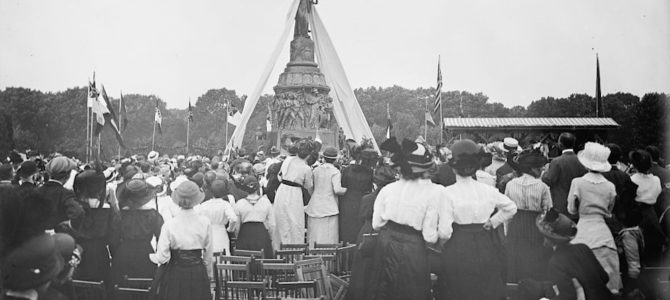
For many Americans, Memorial Day has become a nonchalant occasion to take Monday off work and gather with family and friends at a park or a backyard cookout. There’s nothing wrong with that as far as it goes, but it’s not what Memorial Day is really about.
Memorial Day is of course about honoring our war dead. It was first instituted in the immediate aftermath of the Civil War, when there were countless war dead to honor, Union and Confederate. Back then it was called Decoration Day, as the point was to decorate the graves of the fallen with flowers.
There’s a lot we can learn today from understanding those early Memorial Days. After four years of a war that took the lives of some 620,000 Americans, Memorial Day was about remembering and honoring all who gave their lives, regardless of which uniform they wore. Recall that this was a time, much like our own, of deep divisions and rancor in America. Yet Americans then were able to honor the fallen of both sides, recognizing that each died valiantly fighting for a cause in which they believed.
Today, it has become fashionable to remember Confederate soldiers and officers as nothing more than racist traitors—defenders of slavery whose memories should invite scorn and whose images should be stricken from public life. Earlier this month, the City of New Orleans completed the gloomy task of ripping up and hauling off the last of its four major Confederate monuments, a large statue of Gen. Robert E. Lee, a man who arguably did more than anyone to unite the country after the war and bind up its wounds.
Similar efforts to clear public places of Confederate memorials have been undertaken or are now underway across the country. The most zealous of progressives want to do more than just remove the monuments, of course, they want to deface and destroy Confederate graves, too.
These are deeply unhealthy urges, and they point to a festering illness in our national life. We are now approaching a level of disunion in America that rivals that which we saw in the years leading up to the Civil War. Indeed, those who fought each other in that war likely had more in common as Americans than do many partisans today. We could do worse, this Memorial Day, than to remember and try to understand why Americans began decorating the graves of fallen Civil War soldiers in the first place.
Memorial Day Began As An Act Of Reconciliation
The first large-scale observance of Memorial Day came just three years after the war’s end, in 1868. Gen. Ulysses S. Grant and his wife presided over a ceremony organized by the Grand Army of the Republic, a Union veterans organization, at Arlington National Cemetery, the former home of Lee. After speeches, Union veterans and the orphaned children of veterans walked through Arlington scattering flowers on both Union and Confederate graves.
The ceremony in 1868 was patterned after observances that began two years earlier in the South. On April 25, 1866, a group of women in Columbus, Mississippi, laid flowers on the graves of Confederate and Union soldiers in the city cemetery. Indeed, such practices were common in the South both during and immediately after the war, in part because most of the dead, on both sides, were buried in South, where most of them died.
Eventually, some Southern states instituted their own Confederate memorial days. As the decades passed and many in the South became enamored with the “Lost Cause” narrative of the Confederacy, some ceremonies became less about honoring the dead and decorating their graves and more about keeping the grievances and the mythology of the Confederacy alive.
But over time, and especially after World War II, the day came to be less regional and more national in character. Memorial Day’s official date (the last Monday of May) would not be established in federal law until 1971, by which time the “Lost Cause” narrative of the early-twentieth century had significantly faded.
As early as 1900, in fact, Congress approved an official Confederate burial ground at Arlington, in part to ameliorate lingering bitterness over the Civil War. In 1914, President Woodrow Wilson helped unveil a 32-foot statue there honoring the Confederate dead. The base of the statue bears an inscription attributed to Rev. Randolph Harrison McKim, a Confederate chaplain: “Not for fame or reward, not for place or for rank, not lured by ambition, or goaded by necessity, but in simple obedience to duty, as they understood it, these men suffered all, sacrificed all, dared all—and died.”
Wilson, the first president from the South to be elected since 1848, understood the importance of reconciliation between North and South, even as late as 1914. In his remarks at the unveiling, he said, “My task is this, ladies and gentlemen: This chapter in the history of the United States is now closed, and I can bid you to turn with me with your faces to the future, quickened by the memories of the past, but with nothing to do with the contests of the past, knowing, as we have shed our blood on opposite sides, we now face and admire one another.”









